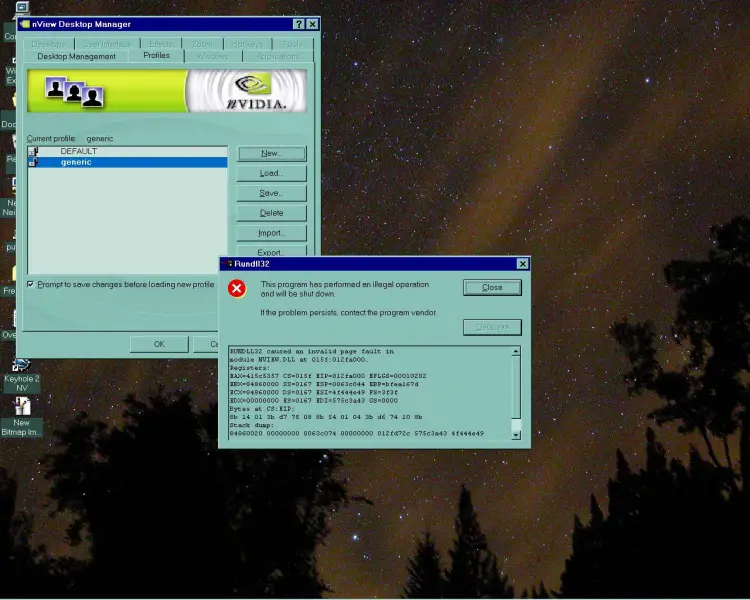

For details, see “Adding “nView Options” to Application System Menus” on page 110. Every window has a “system menu” for basic tasks such as moving or resizing the window. � Another way to access the same nView options menu is by adding the menu item “nView Options” to an application’s system menu. For details, see “Enabling the “nView Options” Title Bar Button” on page 110. � You can enable the nView options menu title bar button and then click the button to open the nView options menu. There are two basic ways you can access nView menu options from your application - you can enable one or more of these methods at any given time. For example, with certain applications such as Internet Explorer (minimum version 6.0), you can create links between two Internet Explorer windows. You can also access nView application‐specific options from the nView options menu. The nView menu options are described in “nView Menu Options: Description” on page 113. Using the nView options menu, you can quickly and easily access nView Desktop Manager features from any application. Red and white LED indicators Figure 8.28 nView Title Bar Button: LED Indicator Accessing nView Menu Options LED indicator = off means global nView Desktop Manager settings are in effect. When LED is white, the application has individual (application) settings defined for it.Result := Result or IsNviewModuleRunning(AHandle, AProcessEntry.Chapter 08 : USING THE USER INTERFACE SETTINGS While Process32Next(AHandle, AProcessEntry) do Result := Result or IsNviewModuleRunning(AHandle, AProcessEntry.th32ProcessID) If SameStr(AProcessEntry.szExeFile, ExtractFileName(ParamStr(0))) then If Process32First(AHandle, AProcessEntry) then While Module32Next(AHandle, AModuleEntry) doĪHandle := CreateToolhelp32Snapshot(TH32CS_SNAPALL, 0) If SameStr(AModuleEntry.szModule, 'nview.dll') then If Module32First(AHandle, AModuleEntry) then
NVIEW DESKTOP MANAGER BASIC EXPLANATION CODE
The only "solution" that I found was to look for nView and advise the user to turn it off using the code below: function CheckForNview: Boolean įunction IsNviewModuleRunning(AHandle: THandle AProcessId: DWord): Boolean ĪModuleEntry.dwSize := SizeOf(AModuleEntry) ĪModuleEntry.th32ProcessID := AProcessId Looking at the stack trace from madExcept I could see that the application froze in nview.dll. The Delphi application stopped responding without any obvious reason. Unfortunately my laptop can't be updated to the latest version so I can't easily test with it. Has anyone else seen this issue? I've verified it with an older version of nView, but a customer with the latest version has the issue whenever he tries to move the main form or resize it. The application will move to the other monitor and any hidden forms will be visible. Choose to send the application to a different monitor. Show or ShowModal the form, then close it (form needs to have been shown at least once). Start any Delphi application with secondary forms that will be hidden when they are closed. Use a multi-monitor system with NVidia nView desktop manager. The problem can also be seen using just the IDE (show a non-docked window, close it and then choose to send the Delphi IDE to a different monitor.) The previously hidden forms are in an unresponsive state and can't be closed. Basically nView seems to 'unhide' hidden secondary forms when moving an application between monitors. I've recently had a customer report an issue with my applications and NVidia nView desktop manager.


 0 kommentar(er)
0 kommentar(er)
